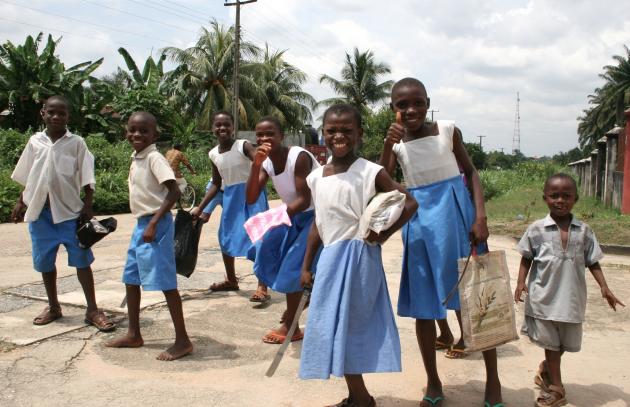Shutterstock - Dans l’état d’Akwa Ibom, au sud du Nigéria, un groupe d’enfants sort de l’école pour aller travailler aux champs.

With around 10.5 million children missing from the education system, Nigeria is home to the world’s largest out of school population. Poverty, conflict and gender barriers are among the reasons that explain this worrying record in a country where primary education is free and compulsory.
But Nigeria also faces another reality: demand for education is soaring with over 40 percent of the 190 million-strong population being under the age of 15. With educational resources spread thin, schools struggle to provide a high quality education to all learners. This poses immense challenges for educational planners and policy-makers.
Reawakening education
An innovative project, in collaboration with IIEP-UNESCO, is helping to turn a new page for education. A group of local and international partners have recently piloted a learning assessment − the Literacy and Numeracy Assessment (LaNA) – for 844 fourth grade students in 24 schools in 12 states across Nigeria.
“LaNA is coming at a time where Nigeria needs to [have] a re-awakening in the educational sector,” says Mr. Adeoye Oyekan from the IEA from theInternational Association for the Evaluation of Educational Achievement. “We hope the data that we collect in this study will be able to provide an informed insight for policy-makers in education.”
The goal is to turn this pilot into a larger survey that would fill gaps in educational data to help improve decision-making at the primary school level. The new data will also help illustrate the extent to which Nigeria’s education system enables learning and articulate the obstacles children face in attendance, progression, and school completion.
The LaNA will not only lay the foundation for a countrywide assessment but also enable new indicators for monitoring progress on the fourth Sustainable Development Goal on education (SDG 4). The partners will also share the results with neighbouring countries in West Africa in hopes of galvanizing support for a West African Regional Learning Assessment Project.
“This is just the beginning”
The idea for improved learning assessments in Nigeria originated during a 2016 IIEP-UNESCO Massive Open Online Course (MOOC) on learning assessments.
Shortly after finishing the MOOC, participant John Okewole, from the Yaba College of Technology in Lagos, convened a group of experts to advocate for improved learning assessments. This soon led to an opportunity with IIEP and the IEA, who were working together in piloting the IEA’s LaNA.
“Now that we have started this project, we aren’t going to stop it there,” says Okewole. “This is just the beginning.”
“We planted a little seed with our 2016 MOOC on learning assessments,” says Mioko Saito, head of the IIEP Training and Education Programme Unit. “We look forward to seeing this pilot blossom into a larger learning assessment and we’re really proud to see our local partners in Nigeria collaborating to make this happen.”
| To stay informed, subscribe to IIEP-UNESCO e-newsletter or follow us on LinkedIn, Twitter, and Facebook. |






